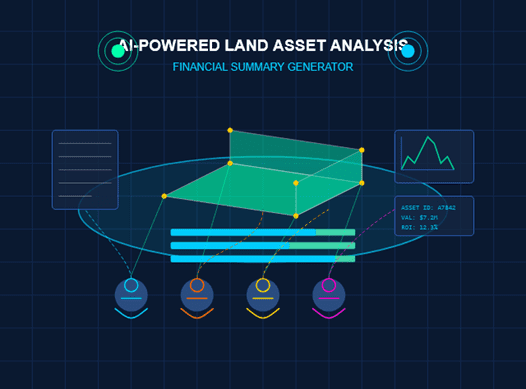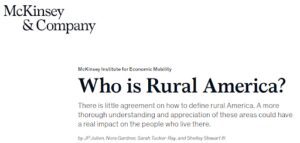Acquisitions Three Strong Financial Points for Investing in Land in Florida and Texas
First, Appreciating Asset in High-Growth States
Both Texas and Florida consistently rank among the fastest-growing states in terms of population. Texas gained nearly 4 million residents between 2010-2020, while Florida added over 2.7 million. This sustained population growth creates natural demand pressure that typically translates to land value appreciation over time, often outpacing inflation and providing better long-term returns than many other investment vehicles.
Second, Tax Advantages
Both states offer significant tax benefits for property investors. Neither Texas nor Florida has state income tax, allowing investors to keep more of their rental income and capital gains. Additionally, both states offer various property tax exemptions and agricultural exemptions (ag valuation) that can substantially reduce annual carrying costs for landowners who qualify.
Third, Multiple Revenue Streams
Land in these states can generate income through various channels simultaneously. Options include leasing for agriculture, hunting rights, mineral rights in Texas, tourism opportunities in Florida, residential development potential in growing areas, and renewable energy leasing (particularly solar in both states). This diversification of potential income streams provides both immediate cash flow options and multiple exit strategies.


Types of Properties
- Agricultural Land
- Commercial Land
- Residential Land
- Recreational Land
- Ranchland
- Raw Land
- Greenfield Land
- Coastal Land
- Mineral Rights Land
- Solar/Wind Farm Land
- Tribal Land
- Wetlands
Finance
Real estate finance provides numerous methods to acquire property, which include both active investing and long-term passive investing. We always try to structure our acquisition in residential investments by "All Cash". At times, we may decide to use a hybrid financing strategy for commercial property investments.
Sound investing principles have been developed by using a systematic process when determining the financial model, which can and will vary based on the pre-determined strategy of the investment.
Simply, financing is the methodology tool to achieve the return objectives. Feel free to contact us and discuss a specific strategy.

Industry Insights & Resources
News
What's Happening in the Florida Land Real Estate Market 2025
As we are in the midst of 2025, Florida's real estate land market is captivated with dynamic opportunities for landowners like you! With rising home values and up-and-coming investment locations, staying in the “know” on these trends can empower you to make smart decisions about selling your land. Here are some of the real estate trends regarding land to keep a watch on in Florida this year:
1. Modest Increase in Home Values
Florida's housing market is on a steady climb, and experts are optimistic, predicting growth of 3-5% in various regions by the end of 2025.
What This Means for You: With home values on the rise, there's a growing demand for land as developers and buyers seize new opportunities.
2. Shifting Buyer Preferences
With a wave of new residents, buyers are now focusing on affordability and modern lifestyle features. People are particularly drawn to rural areas that offer space, nature, and convenience.
What This Means for You: If your land is in a peaceful yet accessible location, it could be just what these eager buyers are looking for!
3. Climate Risks Impacting Insurance Costs
Due to climate-related risks, rising insurance premiums in Florida are making buyers a bit more cautious about where they invest.
What This Means for You: Emphasizing your land's resilience to climate risks or its location outside high-risk zones can make it even more appealing to potential buyers.
4. High Prevalence of All-Cash Buyers
In certain parts of Florida, a noticeable number of homes are being bought with cash. This trend is driven by buyers looking for quick and hassle-free transactions.
What This Means for You: Selling your land to cash buyers can lead to a faster, smoother process without the wait for financing approvals.
5. Emerging Investment Locations
Cities like Orlando, Tampa, Ocala, and Jacksonville are growing, thanks to population growth and economic expansion. Investors are particularly keen on land in these flourishing areas.
What This Means for You:
If your land is near one of these growth areas, it's likely to catch the attention of developers and investors eager for opportunities!
How to Take Advantage of These Trends
Understanding these trends is your gateway to maximizing your land's value. Here are some ways you can benefit:
- Know Your Land's Worth: Get a valuation to see how your land stacks up in the current market.
- Highlight Key Features: Showcase your land's best qualities, like its location, zoning possibilities, or development potential.
- Sell to the Right Buyer: Partnering with a professional land buyer like 1st Serve Properties ensures you receive a fair offer and enjoy a stress-free selling experience.
Exciting times are ahead in Florida's land real estate market, and with the right strategy, you can be a part of it!
Land 2024 Market Report Shows Florida Land Market Shifts with Large-Acreage Transactions and Institutional Investment
The report highlights key trends such as agricultural land conversion, increased conservation efforts, and sustained demand for residential and transitional land.
A significant trend in 2024 was the conversion of more than 72,000 acres of agricultural land into residential, solar, and commercial developments, signaling Florida’s ongoing expansion. This transformation highlights both the state’s economic growth and rising land values, but it also raises concerns about the pressures on agricultural land. Farmers are facing challenges from rising costs and diminishing land availability, further complicated by the decline of industries such as citrus. As Florida’s land market continues to evolve, the need for effective conservation strategies, including investment in conservation easements, has never been more urgent to ensure the preservation of the state's agricultural heritage.
The report tracks land value trends in Florida since 2013, revealing how the state's business-friendly policies, lack of income tax, and steady population growth continue to position Florida as a top destination for land buyers as 2025 unfolds.
Ranch and Recreation Land
The land sale data from 2023 to 2024 paints a picture of a slowly cooling market in the 50-500 acre range. While on the contrary, the 500+ acre tracts continue to generate more and more buyer interest as they become fewer and less common.
Transitional Land
Florida's transitional land market remained strong in 2024, with rising per-acre prices reflecting continued demand across Florida, particularly in high-growth regions.
Conservation
Florida allocated over $567 million to land conservation, reflecting a strong commitment to preservation. Conservation easements secured more land than fee simple acquisitions – 79,925 acres vs. 35,400 acres – at a lower cost per acre. Fee simple acquisition costs surged 130% from 2023 to 2024, reflecting rising land value and demand. Conservation easements cost approximately $2,988 per acre in 2024, making them a more cost-effective option than fee simple acquisitions at $7,186 per acre.
Residential Land & Lots
Florida’s real estate market remains strong, particularly for residential land. The demand for new communities is as strong as ever, and current trends suggest it will remain that way. From 2023 to 2024, land prices increased in 12 counties and lot prices also increased in 14 out of 18 total counties.
Farmland
The average farm size sold in Florida in 2024 was 397.64 acres, showcasing the prevalence of mid-sized to large-scale agricultural properties. The average price per acre was $10,403.56, reflecting strong demand for fertile land and prime locations.
Timberland
After the peak of post-Covid market activity in the timberland segment in 2022, activity in 2023 seemed somewhat subdued by comparison, and 2024 activity was slightly down from 2023. Although there were buyers still actively seeking investment opportunities, enthusiasm for making large financial commitments seemed to be negatively affected by the uncertainty of the direction of the economy and the outcome of the November national elections.
Solar Power
In 2024, solar-related transitional sales reflected a continuing trend of land acquisitions for renewable energy development. This year, our verified sales data recorded nine transactions totaling 15,240 gross acres dedicated to solar-powered projects, amounting to a total sale value of approximately $107,264,848. Compared to previous years, this data suggests a shift in the types of properties being acquired and the regions being targeted for development.
Market Analysis

As the US population has become increasingly concentrated in urban centers, rural communities have, at times, been an afterthought. This dynamic has allowed a number of myths to take hold, such as that rural America is “facing an irreversible decline.”1 However, this narrative bears little resemblance to reality: Areas outside of urban centers are actually growing2 and benefiting from both more diverse populations and economies.
Rural American communities are important contributors to the broader economy. In all, rural areas account for one-seventh of the total US population and approximately $2.7 trillion of US GDP (close to 10 percent).3 A better understanding of rural America could help create opportunities for people living in these communities and further unlock impact for the country overall. McKinsey and its Institute for Black Economic Mobility are doubling down on their commitment to accelerate action on economic mobility. Building on this initial success and recognizing the important needs in other communities, we are expanding on our efforts. In recent years, we’ve supported research on Latino and rural populations—amplifying the realities of millions of Americans who face significant barriers to economic mobility.
We are increasing our resources and capacity to more aggressively support economic mobility for these groups while further investing to accelerate our efforts on Black economic mobility. Today, we are honored to announce the expansion of our economic mobility agenda with the establishment of the McKinsey Institute for Economic Mobility, which will continue its focus on Black populations while advancing our efforts on Latino and rural populations in the United States.
Our inaugural flagship report on rural economic mobility will be published in the coming months. Meanwhile, this advance look at our research reinforces the too-often overlooked potential of rural America.
Nailing down the right definition of ‘rural’
One of the first hurdles we encountered in our research was the lack of a widely accepted definition of “rural America.” Settling on the right one was a critical first step. Across the US federal government, five agencies use five distinct definitions for “rural” communities (see sidebar, “Definitions of ‘rural areas’ by US government agencies”). This lack of clarity has had a profound and lasting impact on rural communities and the individuals who live there. The debate is not academic; government stakeholders’ use of different definitions can lead to inconsistent policies, obstacles to interagency coordination, and greater difficulty in effectively allocating and distributing resources. For example, the variance among federal agencies’ definitions results in a population range of 45 million to 50 million for rural America, a 10 percent difference that nonetheless represents a substantial portion of the US population. The US Department of Agriculture (USDA), the US Census Bureau, and the Office of Management and Budget classify 1,570 counties (about 49 percent of all counties across US states and territories) as rural. However, up to 846 counties (26 percent) may be categorized as rural or urban depending on a specific agency’s criteria, a fluctuation especially common in certain eastern US regions.4 That leaves county leaders to determine their eligibility under different definitions and navigate processes for multiple agencies. They could even be unaware of available resources and programs from relevant agencies. For this research, we selected the USDA’s definition of rural. Its rural-urban continuum codes comprehensively segment rural counties, assessing them based on population size, degree of urbanization, and proximity to metropolitan statistical areas (MSAs). According to this classification, 61 percent of US counties (1,981) are considered rural communities.
1 David Swenson, “Why America’s rural areas are facing an irreversible decline,” World Economic Forum, May 10, 2019.
2 Lindsay Spell and Marc Perry, “More exurban communities now among nation’s fastest growing places,” US Census Bureau, May 16, 2024.
3 Olugbenga Ajilore and Caius Z. Willingham, “Redefining rural America,” Center for American Progress, July 17, 2019.
4 McKinsey analysis.
Who is
Knowledge Base
Flood Insurance URLs
Top 25 Real Estate Terms for Undeveloped Land
When discussing undeveloped land in real estate, specific terminology is crucial. Here's a compilation of 25 key terms:
Key Real Estate Terms for Undeveloped Land:
- Acreage:
- The measure of land area, is crucial for determining size and value.
- Parcel:
- A defined tract of land often legally described.
- Tract:
- A piece of land, often a large, undefined area.
- Plot:
- A smaller, designated portion of land, often for specific use.
- Raw Land:
- Undeveloped land in its natural state, without improvements.
- Undeveloped Land:
- Land lacking infrastructure, utilities, or structures.
- Zoning:
- Local regulations governing land use, impacting development potential.
- Easement:
- The right to use another's land for a specific purpose (e.g., access).
- Right-of-Way:
- A legal right of passage over another's land.
- Setback:
- The required distance between a structure and property lines.
- Topography:
- The shape and features of the land's surface.
- Percolation Test:
- A test to determine soil suitability for septic systems.
- Environmental Impact Assessment:
- An evaluation of potential environmental effects of development.
- Due Diligence:
- The process of investigating a property before purchase.
- Survey:
- A precise measurement and mapping of land boundaries.
- Title Search:
- An examination of property ownership records.
- Appraisal:
- An estimate of the land's market value.
- Utilities:
- Services like water, sewer, electricity, and gas.
- Access:
- The ability to reach the land, often via roads or easements.
- Floodplain:
- An area prone to flooding, affecting development.
- Wetlands:
- Areas saturated with water, subject to environmental regulations.
- Timber Rights:
- The rights to the trees are located on a parcel of land.
- Mineral Rights:
- The rights to the minerals are located below the surface of the land.
- Riparian Rights:
- Rights related to land bordering a body of water.
- Development Rights:
- The legal ability to improve a parcel of land.
AI Tools
Prompt Engineering
Here are some AI prompts related to AI regulatory readiness and the EU AI Act:
1. Comprehensive Analysis Prompts:
- "Break down the key compliance requirements of the EU AI Act and explain their potential impact on different industry sectors."
- "Create a step-by-step implementation guide for organizations to achieve AI regulatory readiness."
- "Compare the AI regulatory approaches of the EU, US, and China, highlighting key differences and similarities."
2. Technical Governance Prompts:
- "Design a framework for AI system risk classification that aligns with emerging regulatory standards."
- "Develop a comprehensive AI governance checklist for technology companies."
- "Create a template for documenting AI system intended purpose and potential societal impacts."
3. Practical Implementation Prompts:
- "Draft an internal communication plan to raise AI regulatory awareness across an organization."
- "Generate a risk assessment template for evaluating AI systems against regulatory requirements."
- "Outline strategies for small to medium enterprises to efficiently manage AI regulatory compliance."
4. Ethical and Strategic Prompts:
- "Analyze the potential long-term economic implications of strict AI regulations."
- "Explore how AI regulations might balance innovation with risk mitigation."
- "Discuss the challenges of implementing AI governance across global, multi-cultural organizations."
5. Detailed Exploration Prompts:
- "Explain the concept of 'AI system qualification' and its practical implementation."
- "Break down the different levels of AI system risk and their corresponding compliance requirements."
- "Create a training module on AI regulatory readiness for leadership teams."
6. Scenario-Based Prompts:
- "Simulate a compliance scenario where a company must rapidly adapt to new AI regulations."
- "Role-play a conversation between a Chief Compliance Officer and a Chief Technology Officer discussing AI regulatory strategy."
- "Develop a case study of a successful AI governance implementation."
7. Technical Deep Dive Prompts:
- "Detail the technical requirements for maintaining AI system transparency and accountability."
- "Explain how machine learning models can be designed to meet emerging regulatory standards."
- "Describe the technical infrastructure needed to support comprehensive AI governance."
8. Future-Oriented Prompts:
- "Predict how AI regulations might evolve over the next decade."
- "Explore potential unintended consequences of current AI regulatory frameworks."
- "Discuss the global coordination challenges in creating unified AI regulations."
These prompts cover a wide range of perspectives on AI regulatory readiness, from technical implementation to strategic planning, and can help organizations and professionals deeply understand the complex landscape of AI governance.
Surveys
Survey: Selling Your Property
Customer Care

Customer Care and Services Document
Introduction
This document outlines the fundamental customer service principles and support practices for our business services. Our commitment is to provide exceptional service, ensuring our clients have a positive experience throughout their property journey.
Communication Guidelines
1. Preferred Channels
-
Phone: Available during business hours (Monday-Friday, 8:30 AM - 6:00 PM EST) for immediate assistance.
-
Email: Responses within 24 hours for inquiries.
-
Electronic Meetings: Scheduled appointments for personalized consultations (Zoom, Google Meet, Microsoft Teams).
-
In-Person Meetings: Scheduled upon written request and acceptance by all parties, specifying date, time, and location.
Response Times
-
Initial inquiries: Within 2 hours during business hours.
-
Complex inquiries: Acknowledgment of receipt within 24 hours, with a follow-up within 48 hours.
2. Customer Service Standards
Professionalism
-
Maintain a courteous, respectful, and professional demeanor in all client interactions.
-
Use clear, jargon-free language that clients can easily understand.
Empathy
-
Actively listen to clients’ needs and concerns.
-
Acknowledge and validate their feelings and experiences.
3. Issue Resolution Process
Step-by-Step Resolution
-
Identify the Issue: Gather all relevant information from the client.
-
Assess the Situation: Determine if the issue requires immediate attention or escalation.
-
Provide Solutions: Offer feasible options to resolve the issue.
-
Follow-Up: Ensure the issue is resolved to the client's satisfaction and solicit feedback.
Escalation Protocols
-
Establish clear escalation paths for complex or unresolved issues, including escalation to a designated manager.
4. Customer Feedback Mechanism
Gathering Feedback
-
Send post-transaction surveys to clients to assess their satisfaction and gather suggestions.
-
Encourage clients to provide reviews on online platforms or direct feedback via email or phone.
Implementing Improvements
-
Regularly review feedback and implement changes to enhance services based on customer suggestions.
5. Empowerment and Autonomy
-
Empower internal partners with the authority to make decisions that benefit clients, such as negotiating fees or offering additional services, to enhance the client experience.
6. Personalization Strategies
-
Utilize pre-approved customer data to personalize interactions—remember clients' names, previous properties of interest, and their specific needs.
-
Tailor communication based on clients’ preferred methods and types of properties.
7. Crisis Management Plan
Handling Complaints
-
Acknowledge complaints promptly and assure clients that their concerns are being taken seriously.
-
Clearly communicate the steps being taken to address the issue and provide regular updates until resolution.
8. Response Timeline Goals
Timelines
-
Initial response to inquiries: 2-3 hours.
-
Resolution of minor issues: 72 hours.
-
Resolution of major issues: Within 30 days.
9. Consistent Updates
Keeping Clients Informed
-
Regularly update clients on market conditions, new listings, and changes to policies that may affect them.
-
Communicate proactively about progress in transactions and any potential delays.
Conclusion
This customer services and support document serves as a foundational guide to achieving excellence in client interactions within our real estate services entity. By adhering to these principles and practices, we are committed to building strong, lasting relationships with our clients based on trust and satisfaction.
Sales
Our decision catalyst philosophy centers on asking precise questions and delivering expert solutions that maximize value in every customer interaction. We facilitate faster decision-making by reducing obstacles or providing clarity. We strive to enhance the quality of decisions by introducing relevant information or perspectives. The goal is to help transform complex problems into smart decisions. We serve as a bridge between analysis and action. 1st Serve negotiates first for You.